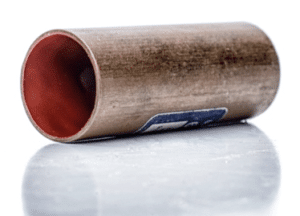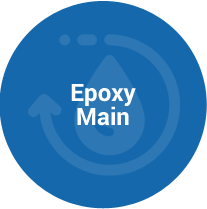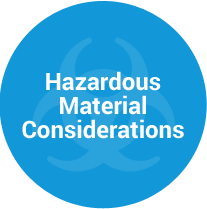Epoxy Lining is a general term for a variety of different plastic resins used on hot and cold water supply pipes, sprinkler lines, HVAC piping, gas lines and certain drain, waste and vent piping. The National Sanitation Foundation (NSF) and U.S. Environmental Protection Agency (EPA) have certified some epoxy linings for carrying potable drinking water. Epoxy resins are generally not certified as a “structural improvement” to the existing piping system.
Click on the icons below to read more about the concerns and challenges of epoxy pipe lining.
Installation Techniques
Blown-In
This is a common technique for epoxy lining of small diameter [water supply] pipes commonly found in multifamily properties. With this procedure, the pipes are drained and dried by blowing hot air through the piping system. The interior of the pipes are then “cleaned” typically using a “sand-blasting” abrasion process to attempt to remove corrosion from the inside of the pipe wall and hopefully create a clean, smooth surface which is required for proper adhesion of the epoxy resin. The liquid epoxy is often blended onsite and blown through the pipe until, in theory, the walls of the pipe are properly coated. This is done in sections of the piping system, with a “shot” of epoxy theoretically calibrated to be enough to coat the estimated length of pipe being coated, which is forced through by air. It is assumed that when the resin comes out the other end after a shot, that the pipe has been adequately coated. The epoxy then cures for several hours (or even days) depending on the type of resins used. After curing is complete, the water service can be restored.
Spin Cast
The pipes are dried and cleaned in a similar fashion as the process for a blown-in epoxy application. However, rather than forced air blowing in the epoxy from one end of the pipe to the other, a spray head is attached to an umbilical cord rig that is pulled through the pipe, while spinning, to create a centrifugal casting process. This process is computer controlled, creating a more uniform coating throughout the length of pipe being lined. Various resins can be employed using this approach, and various thicknesses can be achieved, but it is only available for larger diameter pipes.

Epoxy Lining Conclusions
The overwhelming amount of risk associated with epoxy lining, coupled with observations of failed installations and their consequences, has led the authors to conclude that epoxy lining pipes within the building envelope is not a comparable alternative to pipe replacement. Before making an investment decision, it is always advisable for a community to explore all its options, including a repipe, to ensure their property is making the most informed decision possible about fixing its leaking pipes.










